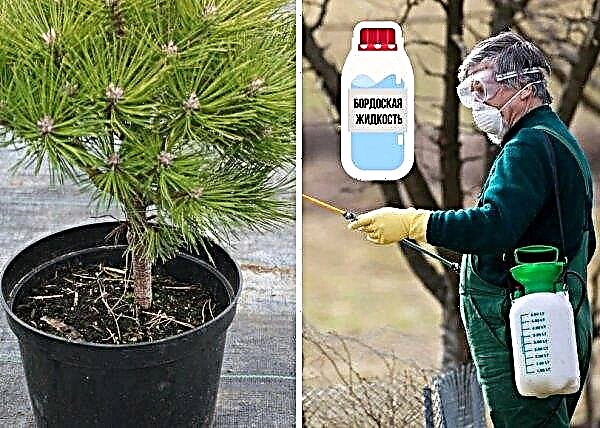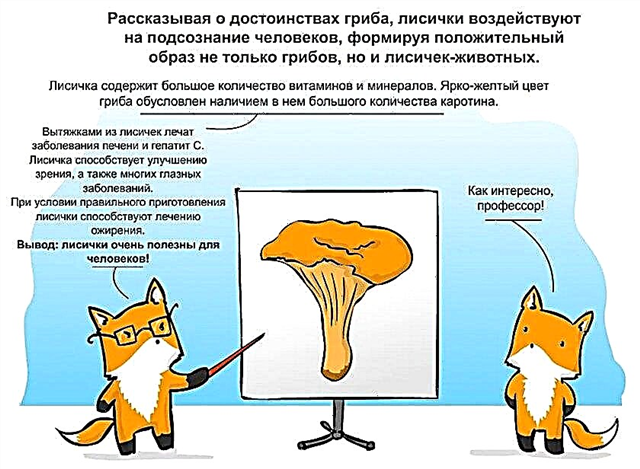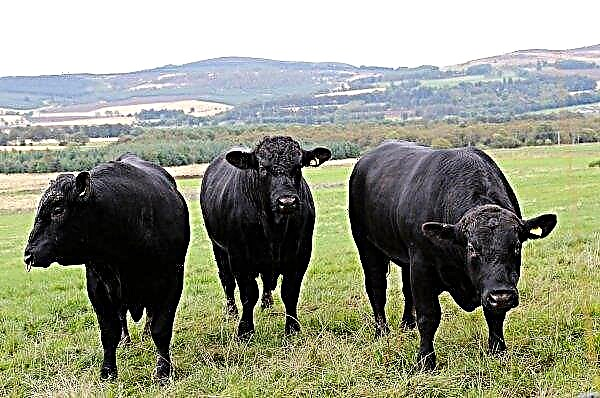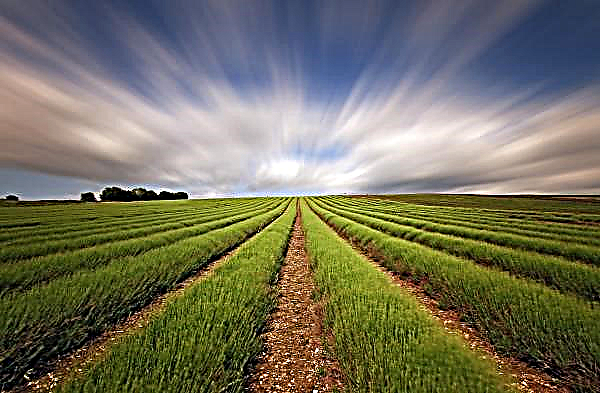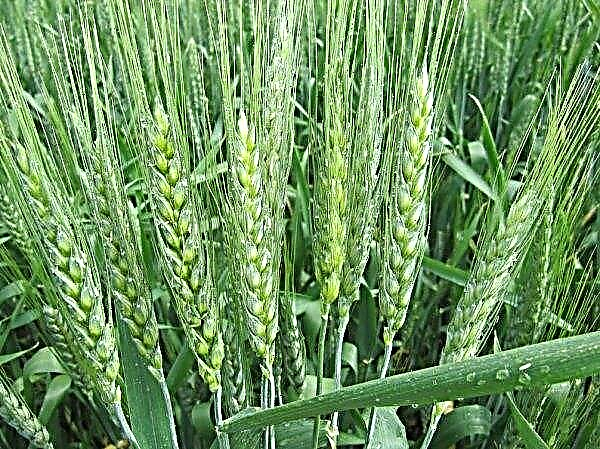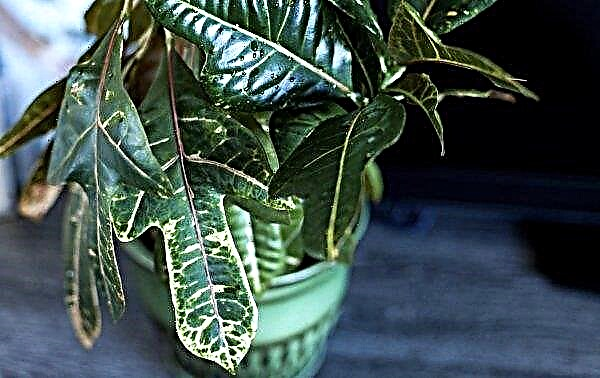One of the disadvantages of early tomato varieties is the small size of the fruit. However, there are hybrids that combine early maturity and a decent size. One of them is the King of the early. This "royal person" is worthy of your acquaintance with her.
Grade description
The variety is semi-determinant and early ripening. Bred in Russia in 2005. The bush is medium-sized, up to 70 cm, with a powerful stem. Suitable for cultivation in greenhouses and in open areas. The leaves are deep green, similar to potato. It has simple flowers with 2-3 nests, female and male type, that is, it does not need pollination by insects. The plant is branched, with a developed root system.
- It has a number of advantages:
- early ripening;
- productivity;
- dense peel, due to which it is well transported and stored;
- easy care;
- universal in application;
- great taste.
Did you know? One glass of tomato juice contains half the required daily intake of vitamins C and A.
Fruit characterization and yield
From the moment of seed germination to the start of ripening, it takes about 80–90 days when grown in a greenhouse. The first fruits are very large and with a sufficient number of top dressings, their weight reaches 500 g. But then they become smaller, and the average weight is 250 g.
They are round in shape, slightly flattened. Inside, fleshy, juicy, not watery. There are not many seeds, the chambers are moderately filled with seminal fluid. Under comfortable growth conditions, proper care, one bush can produce 4–5 kg of tomatoes.

Seed selection for seedlings
Seedlings for seedlings should be bought only in trusted stores, from certified manufacturers, otherwise you run the risk of disappointment. It is desirable that the statute of limitations is not older than two years.
Soil requirements
Tomatoes love light, nutritious, non-acidic soil. When growing in open ground, it is important to prevent stagnation of water. On sandy ground, the fruits will be tastier than on chernozem, so in lowland areas with heavy soil it is better to make a sand cushion for drainage.
To reduce the risk of plant damage by fungal and bacterial diseases, crop rotation rules must be observed.
Important! If on the site before this, sweet pepper, potatoes, and eggplant were growing, then planting tomatoes earlier than 3 years later is not possible.
The bed after cucumbers, cabbage, onions, zucchini is well suited for planting. For growing seedlings, a ready-made mixture from the store is suitable. In order to save money, the soil is also prepared independently - from sand, turf land and peat in equal proportions. Before you start sowing or planting a future crop, the earth is disinfected with boiling water or a solution of potassium permanganate.
Growing conditions
Growing seedlings requires certain conditions. First of all, it is air temperature - not lower than + 23 ° С. It is also important to prevent the drying of the soil surface. But plants do not like high humidity in the air. Until the sprouts hatch, they need darkness. But from the moment of germination, it is important to provide 12-hour lighting, so they will have to be illuminated.
For adult plants, it is very important heat, a sufficient amount of sun and moisture, so the site is chosen from the south or southeast side.

Growing from seeds for seedlings at home
When buying seedlings on hand there is no guarantee that this will be the King of the early ones, so you can try to grow seedlings yourself.
Seed preparation
First of all, it is important to choose seeds for over two years.
Seed preparation involves several stages:
- soaking in a weak solution of potassium permanganate for 30 minutes;
- rinse under running water;
- aging in a growth stimulator for 12 hours;
- hardening in the refrigerator - at night;
- drying out.
Did you know? It is believed that tomatoes come from Peru, or rather, from the coastal strip between the north of Chile and Ecuador. There, this culture was cultivated long before the advent of Europeans.
Seed planting process
Prepared seed can be sown at the beginning of March in cassettes, peat tablets or special drawers. The earth is pre-moistened. It is convenient to take seeds with a toothpick or use a manual seeder. When sowing in containers or tablets put 3 pcs. in one cell. They are placed in boxes at a distance of 3 cm, 4 cm between the rows, sprinkled on top with no more than 2 cm of soil and moistened with a spray bottle. The containers are covered with a lid, glass or film and placed in a warm and dark place.

Seedling care
After the appearance of thin stems of seedlings, the seedlings are exposed closer to the light and the coating is removed. Watering is necessary as the top layer of the earth dries up, making sure that the drops do not fall on the leaves. Plants turn into light every two days so that they grow even. In the stage of two true leaves, seedlings dive. 2 weeks after the pick, you can start feeding fertilizers for seedlings. There may be three top dressings before planting in open ground.
When the tomatoes grow to 15 cm, they begin to harden before landing on the street. They begin to do this for 30 minutes at a temperature not lower than + 15 ° C. For this, the containers are exposed in the evening on a balcony or a veranda. Time is increasing every day. Tomatoes are also gradually accustomed to sunlight, removing shading after 16 hours.
Immediately before planting, plants can be treated with copper sulfate to prevent disease.
Transplanting seedlings into the ground
Tomatoes are planted in the greenhouse when they reach 20 cm in height. In time, this is approximately the beginning of May. For planting in open ground it is too early, you have to wait another three weeks. Our grandmothers focused on the 20th of May, when there is no longer any risk of frost return.
Landing is carried out on a cloudy day, preferably rainy. At the prepared site, holes are made for half a shovel at the rate of 6 pieces per m². It is not worth denser to have this variety, since it lets out many lateral branches that will interfere with walking between the bushes. Or you have to regularly remove the excess parts. Between the rows the distance should be about a meter.
1 liter of water is poured into each well and a handful of ash is put. You can add onion husks. Seedlings are carefully removed from the containers, being careful not to damage the roots. The longest central root is cut in half. The tomato is lowered into the hole, sprinkled with earth and compacted. When all plants are planted, each is watered with hot water in the sun. It is possible to mulch the earth around with peat or sawdust so that moisture can hold well.
Important! As a result of heat treatment, the beneficial properties of tomatoes only improve.
Agriculture cultivation of tomato seeds in the open field
The early king can be grown not only through seedlings, but also by sowing seeds in open ground. At the same time, such tomatoes will quickly catch up with their seedling brothers in growth and will be more seasoned.
Outdoor conditions
A place for sowing is chosen and prepared in the fall. It should be well warmed up by the sun and be a little on a hill.
It will be good to make a warm bed:
- dig a trench of the right size with a depth of 1.5 bayonets of a shovel;
- lay a layer of straw and humus on the bottom;
- sprinkle with soil.

The process of planting seeds in the ground
Pre-disinfect and germinate half of the seeds, and leave the other half dry. Make shallow holes up to 40 cm in diameter, pour them with hot water and sow dry seeds mixed with germinated seeds. Germinated sprouts will rise faster, but in case of frost they will die. But the dry ones, on the contrary, will harden and come out later. They will not be so afraid of frost and disease.
Sow need so that the seeds are evenly distributed over the entire surface of the hole. Sprinkle on top of the sowing soil, as usual. When the seeds sprout and they have 2 full leaves, they need to be thinned and the strongest ones left. In phase 5, the leaves are thinned again so that no more than 6 pieces remain in the hole. And when they grow up well, they leave a couple of pieces, and the rest are transplanted to another place.
Did you know? In green tomatoes, there is solanine poison. It also appears in ripe fruits, long exposed to light.
Watering
Usually in April the land is still saturated enough with moisture, and watering is not required. It takes about two weeks to germinate the seeds. In May, it is necessary to water with warm water under the root. In the absence of precipitation, this is done twice a week.
Soil cultivation and weeding
Weeds take moisture and nutrients from the ground, so it is important to remove them on time. Also, the roots of tomatoes need constant access to air. Loosen the soil must after rains and watering. Two to three times during the season, the King of the early must be spudded so that he actively grows lateral roots.

Stepson
The best harvest can be achieved if the plant forms no more than two stems. To do this, it is necessary to pinch it in time, removing excess side shoots. Stepsons appear already after the beginning of flowering. That process, which is located under the first flower branch, must be removed.
Delay with the removal is not worth it, as the stepson takes away some of the moisture and nutrients. Stepsons should not have time to become thick, like a stalk, since in this case, removal can harm the plant. They break it out with your hands, leaving a stump of 5 cm. You can also use a sharp knife or scissors.
Garter
Although the King of the early ones belongs to semi-determinant varieties that usually do not grow tall and do not require garters, he needs it. Many ovaries form on the hands, and the fruits are quite large. Without a garter, they will simply tumble the plant to the ground. This is extremely undesirable, since pathogenic bacteria and organisms get from the ground, which leads to decay of the fruits and loss of yield.
You need to tie up at the stage of ovary formation. A flat and stable peg is driven near each bush, which is 20 cm higher than the tomato. And a plant is tied to it with twine or purchased mounts in two places. If the plantings are arranged in even rows, then you can lay rails along the row: the first at a height of 20 cm from the ground, the second - 50 cm from it. And already to them to attach bushes. The first method is simpler, but if there are a lot of bushes, then it is better to choose the second.

Top dressing
This season, this variety is fed 3 times. The first - no earlier than 14 days after planting. You can use chicken droppings with water 1:15 or mullein 1:10. Superphosphate or urea is added to them. Tomatoes respond well to nettle infusion.
The second and third feeding should contain less nitrogen fertilizers and more potassium-phosphorus. Yeast infusion is also used. At the stage of the beginning of fruiting, wood ash is sprinkled under the root and watered by bushes. In general, any fertilizer is applied only on moist ground.
Pests, diseases and prevention
As a prevention, you can use a number of folk methods:
- from pests garlic infusion works well. For 10 liters of warm water, take 2 cups of garlic, press through a press, stir, strain and process the tomatoes. Processed every 10 days;
- ash solution;
- a landing near a site of marigolds and nasturtiums will scare off the Colorado potato beetle;
- onion peel infusion;
- dusting bushes with ashmixed with black pepper will scare off the aphids.

Harvesting and storage
In July, the fruits are plucked as they ripen. Be sure to visit the garden every three days and pluck everything that has ripened, as these fruits take away strength from the bush, which will slow down the ripening of green tomatoes. In August, when the nights are cold and there is more rainfall, brown fruits are also removed from the bushes to prevent late blight.
If on the eve of harvesting there was a shower and the tomatoes were splashed with earth, then they should not be washed. You can wipe each with a dry cloth.Important! Harvesting is carried out only in dry and sunny weather. The fruits must be dry.
Under special conditions, the shelf life of tomatoes can be significantly extended. They are sorted by maturity and laid out in rows in boxes. If there are not many fruits, you can wrap each in soft paper.
Tomatoes of different maturity are stored at different temperatures:
- green at + 10 ... + 12 ° C;
- brown at + 6 ° C;
- red at + 1 ... + 2 ° С.
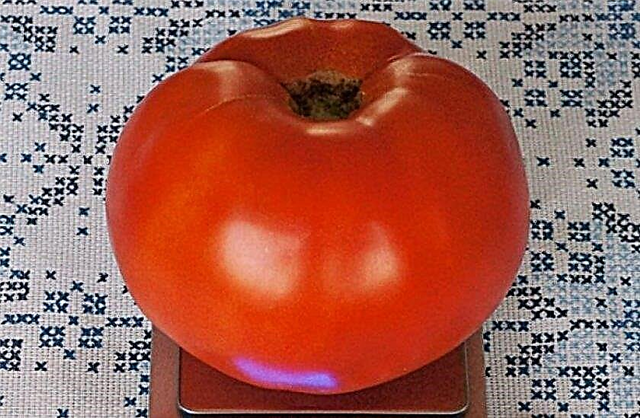
The King early variety certainly deserves its place in the garden. It is also good because you can grow a crop from your own seeds. So easy to care for and versatile to use, it will delight you with its excellent taste and high yield.


